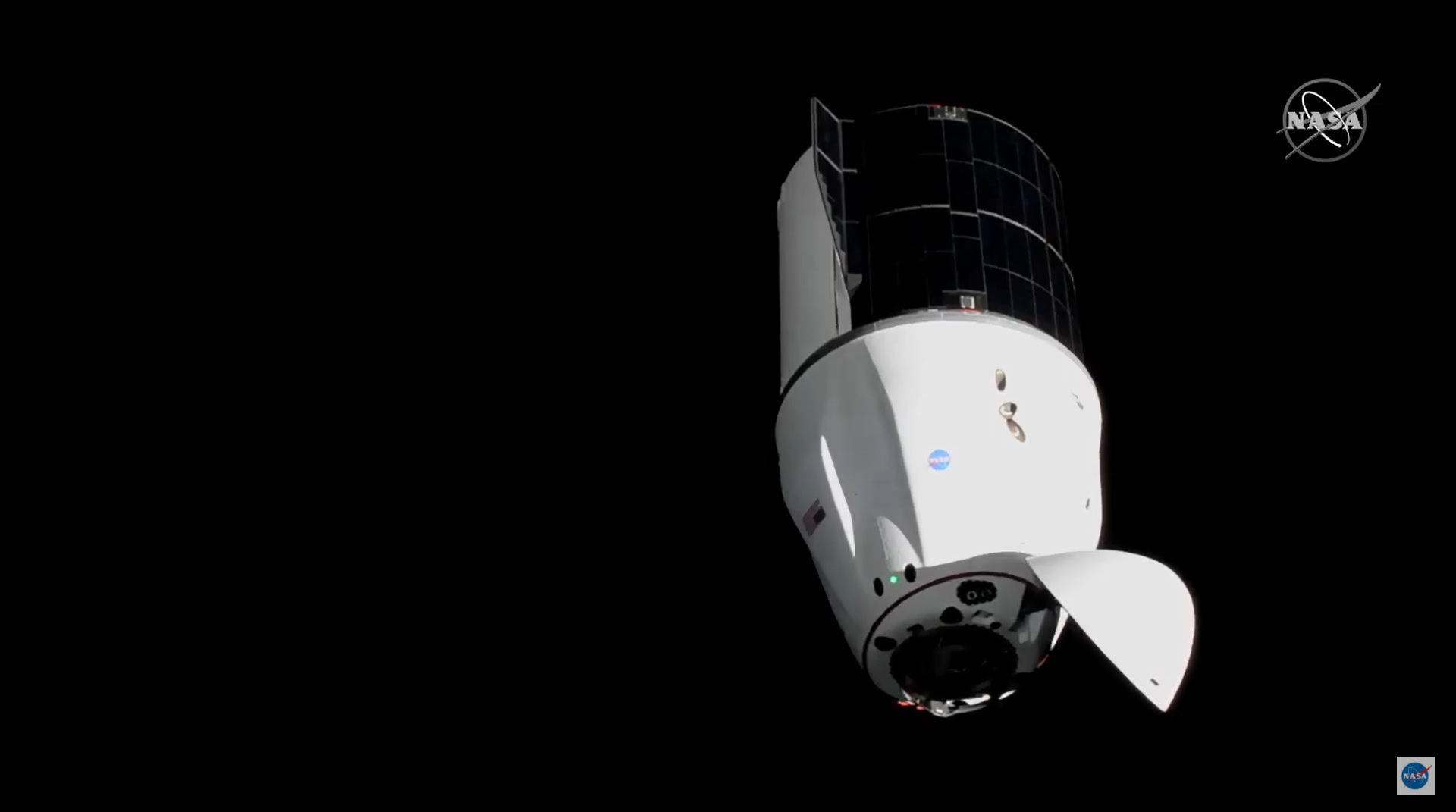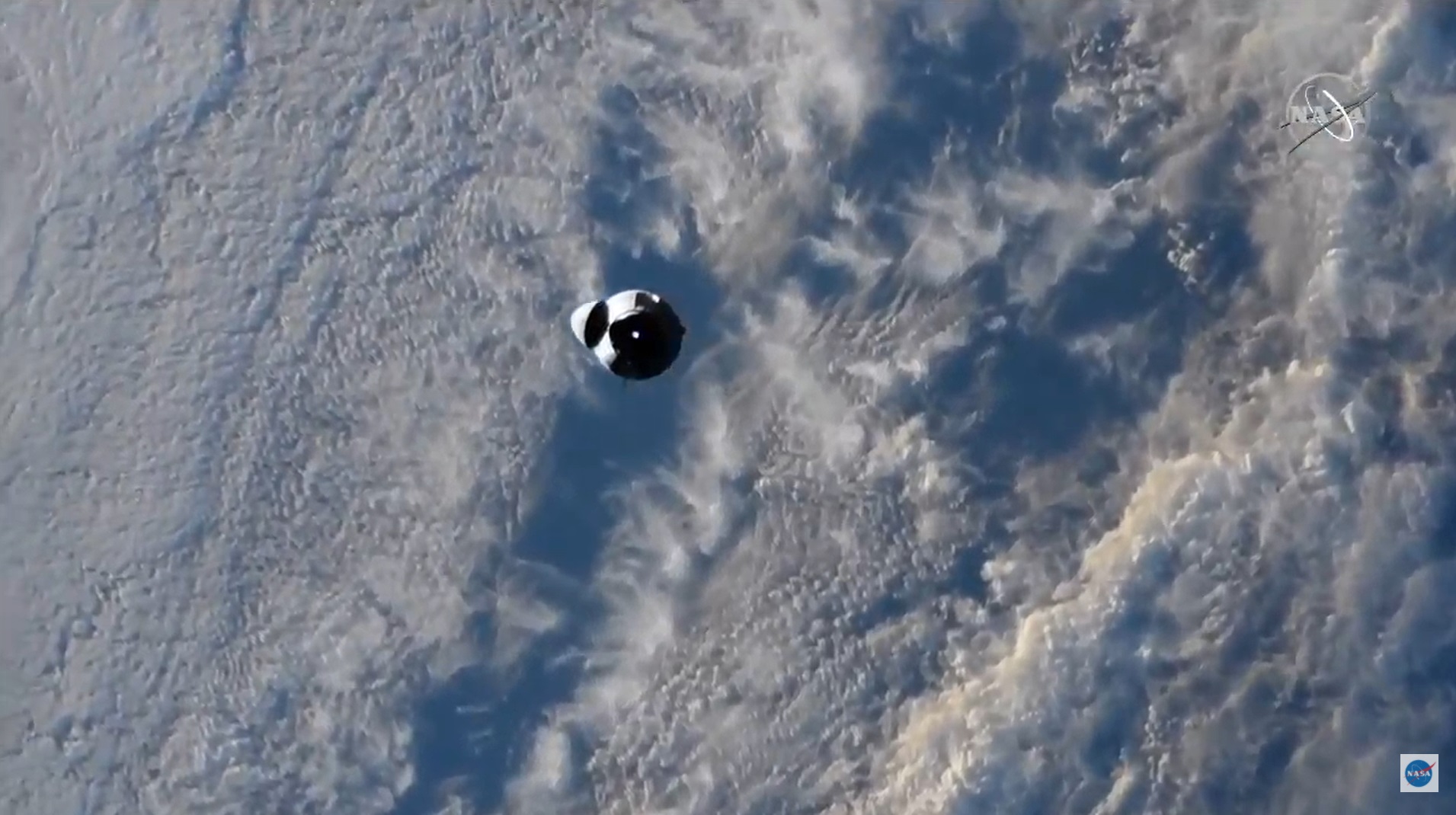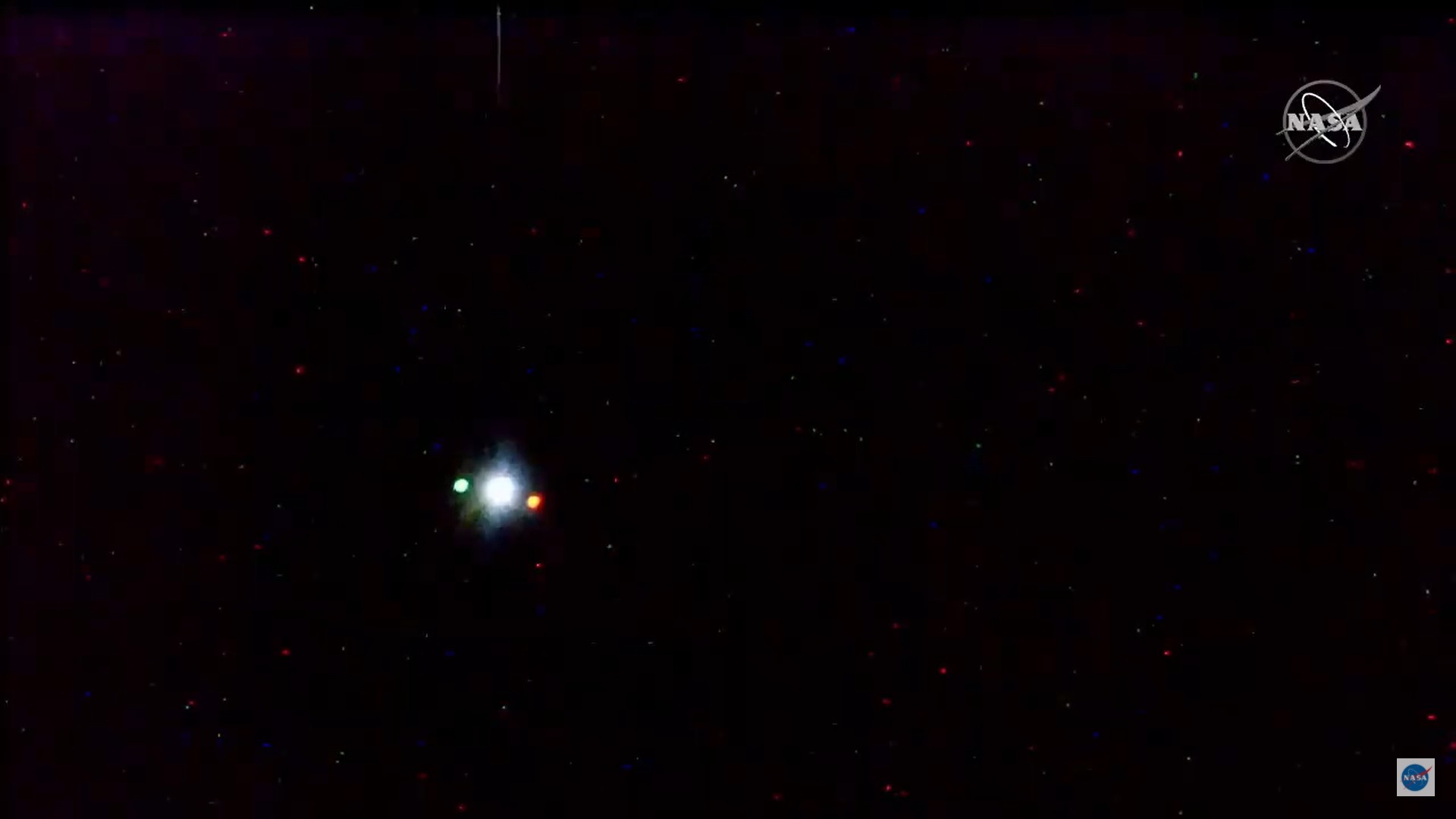SpaceX Dragon docks at space station to deliver new solar arrays and tons of supplies
There are now two Dragons at the space station.
CAPE CANAVERAL, Fla. — A SpaceX Dragon cargo ship arrived at the International Space Station today (June 5) to deliver new solar arrays along with tons of fresh research experiments and NASA supplies as part of the company's 22nd cargo resupply mission.
The uncrewed Dragon autonomously linked up with the orbiting laboratory at 5:09 a.m. EDT (0909 GMT), parking at the zenith, or space-facing, side of the station's Harmony module. Docking occurred approximately 40 hours after the Dragon's launch on a Falcon 9 rocket Thursday (June 3) from NASA's Kennedy Space Center in Florida. At the time of docking, both spacecraft were sailing about 258 miles (415 kilometers) over the South Pacific Ocean.
"It was a great approach and was awesome watching it come on in, and we're glad it's here," NASA astronaut Shane Kimbrough told flight controllers after docking. "Looking forward to all the science and other goodies that it brought up along with our EVA solar arrays. It's going to be a great few weeks as we get into Dragon and get things out."
Video: See SpaceX's 1st automated uncrewed docking at space station
Related: SpaceX launches upgraded Cargo Dragon to space station for NASA

SpaceX's Dragon CRS-22 mission is the second upgraded supply ship to dock with the International Space Station (ISS) without the help of astronauts, who typically use the station's Canadarm2 robotic arm to grapple incoming cargo vessels and manually attach them to the station. However, two Expedition 65 crewmembers — Kimbrough and fellow NASA astronaut Megan McArthur — did monitor the docking from inside the station's Cupola observatory.
The arrival of this upgraded Dragon CRS-22 cargo spacecraft will bring the total number of SpaceX vehicles to two. A different Crew Dragon spacecraft, which brought four astronauts to the space station in April on the Crew-2 mission, is also currently docked at the Harmony module.
"Hard capture is complete and it's a great day seeing another Dragon on ISS [International Space Station]," spacecraft communicator Leslie Ringo radioed the station crew after docking from NASA's Mission Control in Houston.
Get the Space.com Newsletter
Breaking space news, the latest updates on rocket launches, skywatching events and more!
Related: SpaceX's Crew Dragon space capsule explained (infographic)



This Cargo Dragon is SpaceX's second supply-toting vehicle to autonomously dock itself with the space station. That is a new feature thanks to some redesigns that SpaceX has made to its workhorse Dragon cargo spacecraft. The upgrades allow the vehicle to not only dock with the station (its predecessor was grappled by the station's robotic arm and berthed to the station with the help of astronauts on board) but also increased the craft's cargo capacity by about 20%, enabling more science.
This Dragon will be the second to splashdown in the Atlantic Ocean following a month-long stay attached to the ISS. This change allows researchers to receive their precious cargo shipments much faster than before.
On board the Dragon CRS-22 spacecraft is 7,300 lbs. (3,311 kilograms) of supplies and science investigations, including two brand new roll-out solar arrays that will help boost the space station's power supply. Built by RedWire and Boeing, the arrays are the first two in a set of six that will be installed on the station in the coming months.
Dubbed iROSA (ISS Roll-Out Solar Array), the first set of flexible solar panels will be installed this month as part of a series of spacewalks performed by Shane Kimbrough and Thomas Pesquet, on June 16 and 20. The design was first tested as part of a technology demonstration on a previous resupply mission.
In addition to the ISS, the solar arrays will be used on future missions, such as the Double Asteroid Redirection Test (or DART), which is set to launch on a SpaceX rocket later this year. It will also be used on NASA's planned Lunar Gateway, a part of the agency's Artemis moon program.
Also on board the Dragon CRS-21 spacecraft is more than 2,000-lbs. (907 kilograms) of scientific experiments, including some interesting organisms like tardigrades (also known as "water bears") and Bobtail squid.
The Dragon CRS-22 mission marks the second cargo mission the company has flown under its second Commercial Resupply Services contract with NASA, called CRS-2.
SpaceX signed its first such contract with NASA in 2008, originally agreeing to launch 12 cargo missions to the space station between 2012 and 2016. NASA extended that contract to include a total of 20 Dragon cargo flights, for a total cost of about $700 million in 2015. (Northrop Grumman, formerly known as Orbital ATK, also received a contract to fly NASA cargo on its Cygnus cargo spacecraft.)
According to Montalbano, the cargo Dragon will remain docked with the space station until July. Once Cargo Dragon departs, the Crew Dragon currently docked with the station will switch parking spots, opening up a port on the ISS for an uncrewed Boeing Starliner spacecraft, which is scheduled to launch on its OFT-2 test flight to the station on July 30.
Follow Amy Thompson on Twitter @astrogingersnap. Follow us on Twitter @Spacedotcom or Facebook.
Join our Space Forums to keep talking space on the latest missions, night sky and more! And if you have a news tip, correction or comment, let us know at: community@space.com.

Amy Thompson is a Florida-based space and science journalist, who joined Space.com as a contributing writer in 2015. She's passionate about all things space and is a huge science and science-fiction geek. Star Wars is her favorite fandom, with that sassy little droid, R2D2 being her favorite. She studied science at the University of Florida, earning a degree in microbiology. Her work has also been published in Newsweek, VICE, Smithsonian, and many more. Now she chases rockets, writing about launches, commercial space, space station science, and everything in between.









